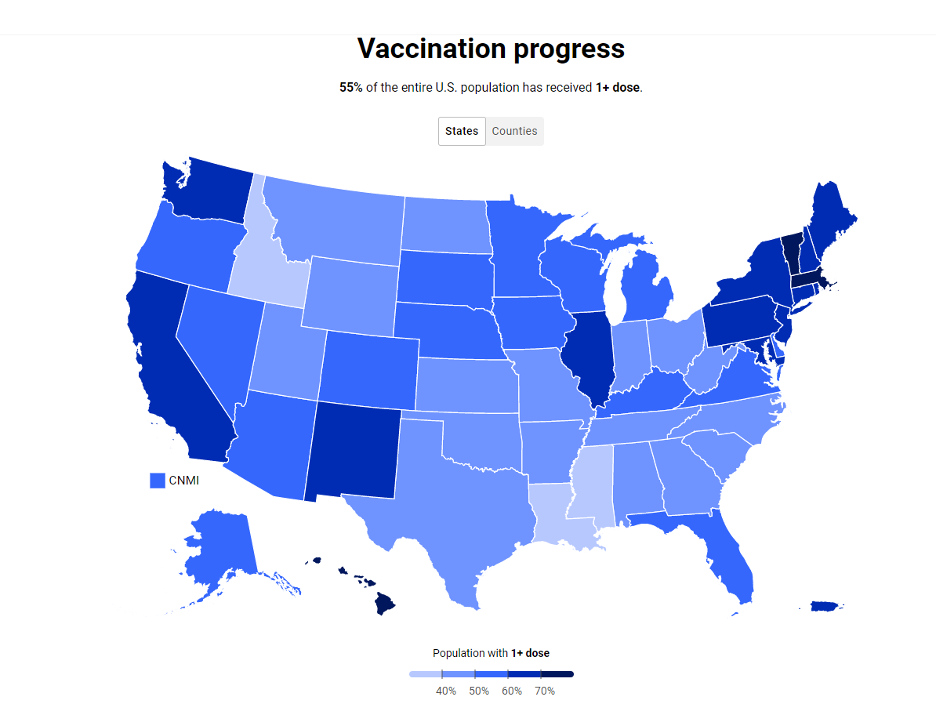The market for new and existing homes continues to rise
The US stock market continues to rally past short-term concerns and advance to new records. This past week the market came out of the July Fourth holiday and spent most of the week in the red. Investors were concerned about supply chain disruptions, the rise of the COVID-19 Delta variant and misalignment in the labor market. In addition, President Biden issues an executive order with 72 initiatives designed to limit corporate dominance in the health care, technology, telecommunications, and manufacturing industries.
Nonetheless, investors shook off their worries and drove the market to a positive close for the week and a new record.
The Markets
On Friday, the Dow Jones Industrial Average rose by 448 points, or 1.30%. The S&P 500 index increased 49 points, or 1.13%. The Nasdaq ascended 142 points, or 0.98%. All three indexes closed at new highs.
For the week, the Dow rose 0.2%, and the S&P 500 index and the Nasdaq were both up 0.4%. Year to date, the Dow has risen 14%, the S&P 500 index has increased 16%, and the Nasdaq is up 14%.
West Texas Intermediate Crude futures for August 2021 delivery traded at $74.63 a barrel on Friday, up 2.32%. The demand for oil continues to grow as the world emerges from the pandemic. OPEC nations plan to increase supply in the next few months. and their allies are deadlocked in their discussions about raising output.

Source: CNBC
10-Year Treasury Note
Friday the yield on the 10-year Treasury note was 1.354%. Yields have been falling. As prices for bonds rise, their yields fall. Investors appear to be buying Treasuries because they’re concerned about the strength of the economy. They have concerns about the Federal Reserve’s intentions, the spread of the Delta variant and mixed economic data.
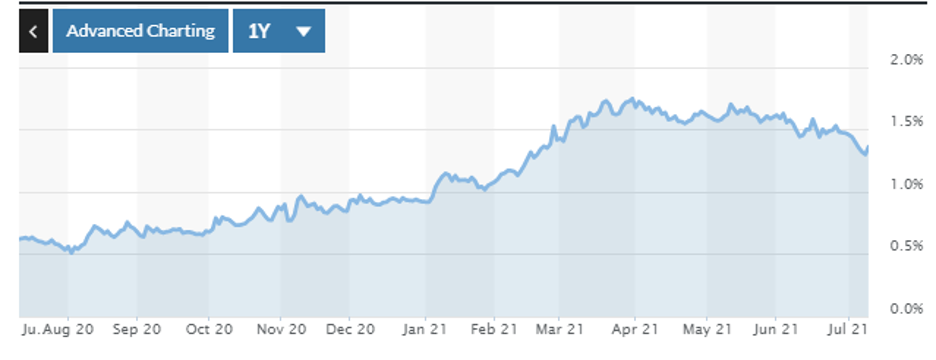
Source: Market Watch
COVID-19 – The Numbers
Globally, across 213 countries and territories, there have been over 186 million confirmed cases and over 4 million deaths. In the United States, over 33 million have been infected and over 607,000 have died.
While the United States continues to make progress against the COVID-19, much of the world is suffering. The rate of vaccination in the underdeveloped world remains low and the virus is still spreading with little control.
Infections
We are not out of the woods yet with COVID-19. New cases have increased 10% in the past few weeks, according to the CDC. There are still many Americans who aren’t vaccinated, and they’re particularly susceptible to the virus.
The Delta variant is now the dominant strain the US, as it is in a growing number of countries. The Delta strain is 50% more transmissible, and causes more severe illness.
Research in Israel suggest that the Pfizer vaccination isn’t as effective against the Delta variant as it is against the earlier strains. Pfizer has announced that it will seek approval for a booster shot that should be available in the fall.
Interestingly, US health officials haven’t yet indicated that those who are already full vaccinated will need a booster shot. Pfizer’s actions clearly indicate that their data suggests their original vaccination is growing less effective against the virus as it mutates.
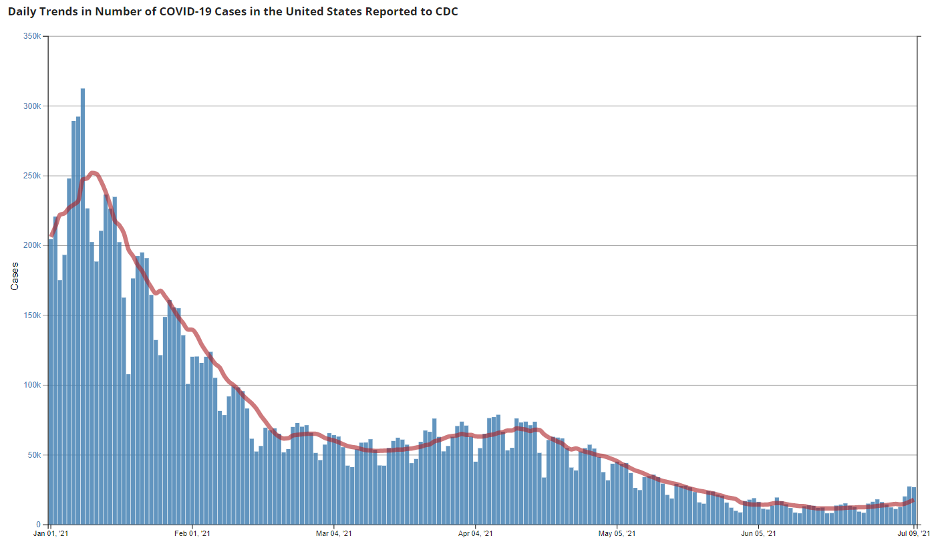
Source: CDC
Hospitalizations
As more people are getting sick from COVID-19, hospitalizations are increasing. According to the CDC, the change from June 25 to July 1 is +14.4%. The current 7-day average is 2,190.
Deaths
Deaths from COVID-19 are increasing again. Over 99.5% of the people who die from the virus are unvaccinated. So, health officials must find a way to convince more people to get vaccinated.
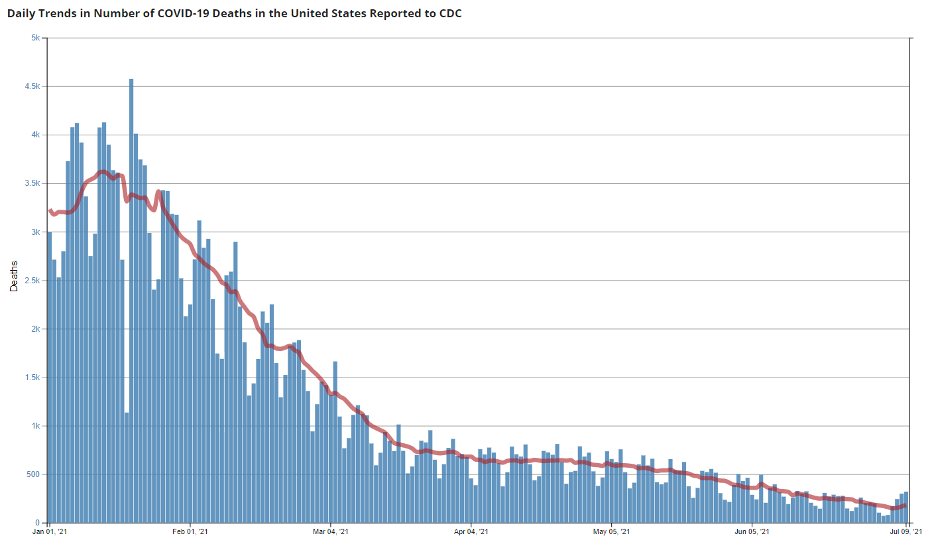
Source: CDC
Vaccinations
As we’ve discussed in the past, the world will fully emerge from the pandemic only when the virus is contained through vaccination and improved treatment. Unfortunately, millions in the US and billions globally remain unvaccinated. While treatment is better, nearly 10,000 people are dying every day around the world from the virus.
The chart below shows the daily rate of vaccination in the US.
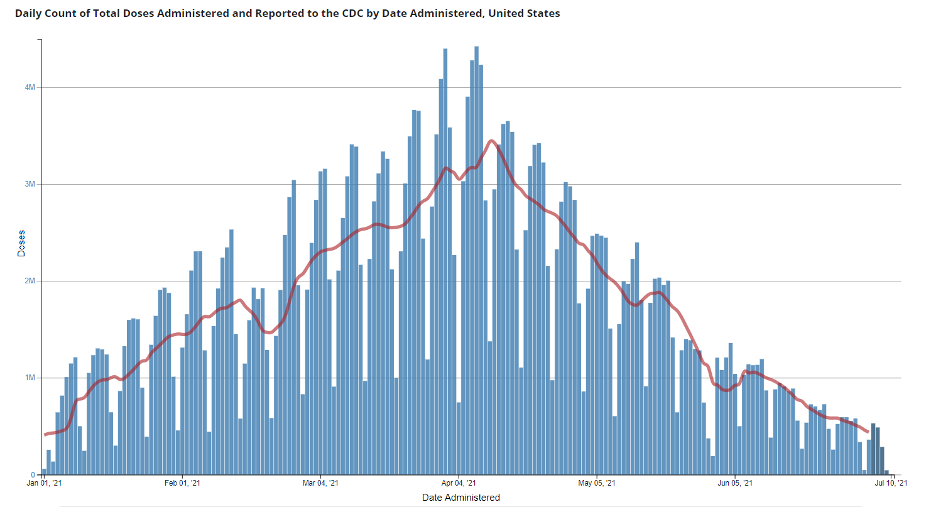
This chart shows the cumulative number of vaccinations across the country.
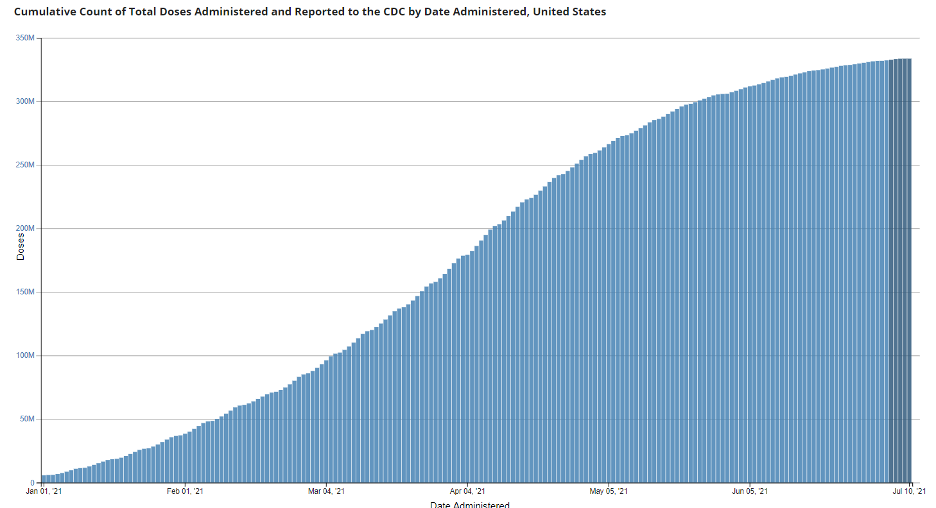
Source: CDC
For an interactive map of the rate of vaccinations in the US:
The Labor Market
The Labor Department reported that weekly unemployment claims increased by 2,000 to 373,000 last week. The recovery in the labor market continues to be up and down as depicted below. The number of weekly claims is still well above the level before the pandemic (220,000).
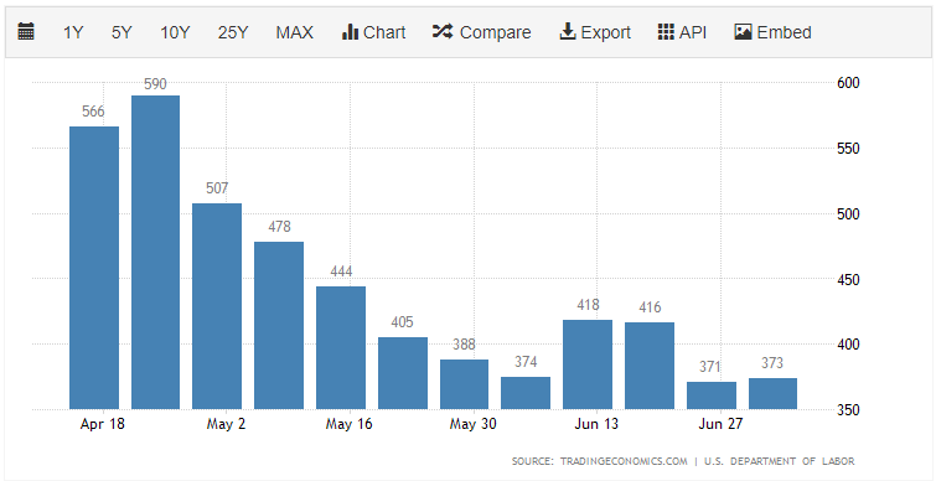
Source: Trading Economics
There are 6.8 million fewer jobs than in February 2020. Currently 9.3 million Americans want jobs and companies have over 9.2 million job openings. So, there’s a disconnect in the labor market.
We’ve discussed the reasons for this in prior commentaries and the underlying dynamics remain. Workers have moved and are unable to find employment. Jobs exist in places where there aren’t enough workers. Worker preferences have changed. For example, many have left health care and the leisure industry. Workers are concerned about their health and safety at the worksite. Many workers, bolstered by the increased valued of their savings, retired early. Immigration has slowed and reduced the supply of labor. Working parents have struggled to arrange and pay for childcare. Extended federal unemployment benefits, in addition to normal state jobless benefits and pandemic relief payments, made it easier for many Americans to remain out of the workforce.
The mismatch between people looking for work and employers looking for workers has resulted in an increase in wages and the more widespread use of bonuses and other incentives.
The unemployment rate was 5.9% in June. For perspective, the rate before the pandemic was 3.5%. Wages were up 3.6% in June compared to the prior year.
The Federal Reserve is well aware of the problems in the labor market. However, the Fed has maintained that situation is temporary and that eventually workers and employers will find each other, and the economy will move back toward full employment.
Infrastructure Deal
For weeks we have been following President Biden’s efforts to get Congress to pass an infrastructure spending package. The negotiations between leaders in both parties and the White House continue. But an agreement remains elusive.
The parties can’t agree on what to include in a package, the size of the package, how to pay for it, or even the circumstances around when and how to vote on it. While they may reach an agreement, it’s not likely until at least the fall.
We hope you’re enjoying your summer.
PLEASE SEE important disclosure information at www.springwaterwealth.com/blog-disclosure/.

